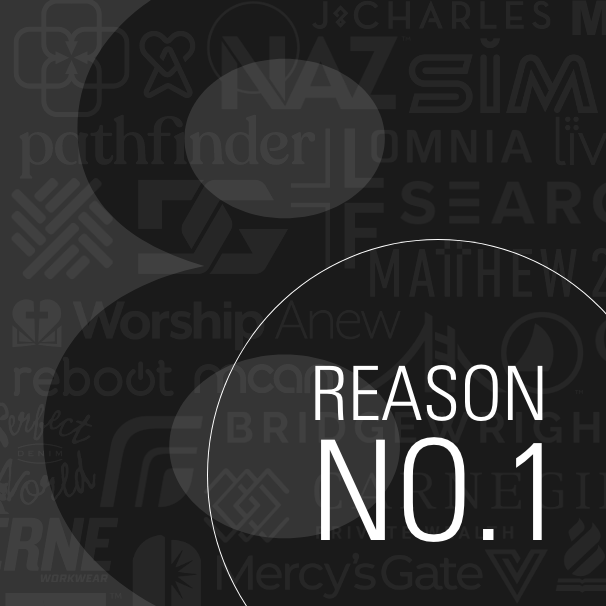Let's kick back and be ourselves.

Reason to Rebrand #1: When y’all aren’t on the same page.
8 Reasons to Rebrand
Rebranding. It’s a big word—and an even bigger decision. Change is always hard, especially when it affects every aspect of your livelihood and hits your bottom line. But whether your brand’s been chugging along for one year or 100, there are times when a brand-new brand is not only helpful, but necessary.
At Big, branding is what we do (and we’ve spent decades doing it). Over the years, we’ve spotted some situaitons and symptoms that almost always point to the need for a rebrand. If you’re thinking about taking the leap toward a new brand identity, read through this series. If any of these points hit a little too close to home, you know who to call. (Hint: It’s us. Call us. Obviously.)
Internal confusion leads to external confusion. And for customers, even a whiff of either is a big turn-off. What happens when you ask your team what makes your brand unique? If their answers don’t sound like they’re on the same page—or even reading from the same script—your customers won’t be able to articulate your brand differentiators either.
Despite your first instinct, this issue isn’t departmental. It isn’t a training and onboarding problem. It can’t be fixed by giving employees a script to memorize. In our experience, it’s rooted in the brand.
Sometimes, a disorganized brand looks like employees saying a lot of nice things, but not the SAME nice things. Other times, those “nice things” aren’t supported by end-users’ real-life experiences. And oftentimes, a brand is trying to say too much to too many people—which is a slippery slope to saying and being “nothing special.”
So, how do you make sense of the mess and find a unified brand message? The first step is to determine what sets you apart and reorient your brand around a few key points. Figure out a small handful of things that you do best—and let that narrow focus lead the way.
Still wondering where to put a stake in the ground? Ironically, your internal stakeholders aren’t always the best judges of what makes your brand stand out. Instead, don’t be afraid to tap into the collective wisdom of your brand advocates. The people who know, love and interact with your brand day after day, year after year usually know exactly what makes your brand special—and they aren’t afraid to tell you, their mom, their sister and everyone else they know. (And that’s a good thing!)

Client Case Study
Thor Motor Coach
Like most of our branding assignments, the Thor Motor Coach rebranding began with research. We interviewed internal audiences—employees, leadership and decision-makers—and also interviewed customers and motor coach owners. Internal audiences talked a lot about quality. On the flipside, external audiences and end-users didn’t talk as much about quality. Instead, motor coach owners talked about how wonderful it was that Thor offered such a wide array of floorplans and options. They chose Thor because of selection, customization and the ability to find an RV that fit their life.

With that in mind, our brand strategy pivoted to match the customer experience. We crafted brand messaging and assets that celebrated Thor’s strengths instead of drawing attention to their perceived weakness. And to ensure everyone was on the same page, our internal brand launch helped employees rally around the new positioning.